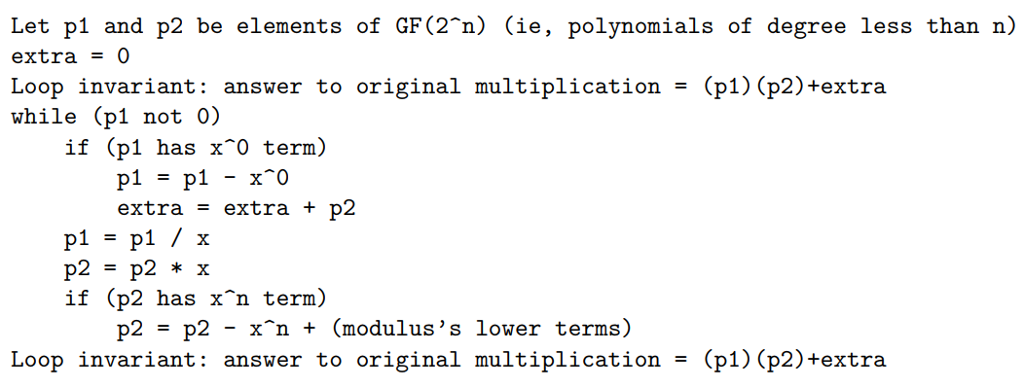Question
The loop invariant is a statement that could be proven by induction to be true before and after each iteration of the loop. So, when

The loop invariant is a statement that could be proven by induction to be true before and after each iteration of the loop. So, when the loop terminates because p1 = 0, the loop invariant implies that the answer to the multiplication is in extra. Write a function in C that implements this pseudocode with the following header.
 The modulus parameter will represent a polynomial of degree which will be less than 32. Parameters a and b will each represent polynomials with degree less than degree. Develop this pseudocode into a C function with the intended signature. Test it thoroughly by picking strategic inputs and comparing hand-calculated results with computer-generated results.
The modulus parameter will represent a polynomial of degree which will be less than 32. Parameters a and b will each represent polynomials with degree less than degree. Develop this pseudocode into a C function with the intended signature. Test it thoroughly by picking strategic inputs and comparing hand-calculated results with computer-generated results.
Step by Step Solution
There are 3 Steps involved in it
Step: 1

Get Instant Access to Expert-Tailored Solutions
See step-by-step solutions with expert insights and AI powered tools for academic success
Step: 2

Step: 3

Ace Your Homework with AI
Get the answers you need in no time with our AI-driven, step-by-step assistance
Get Started


